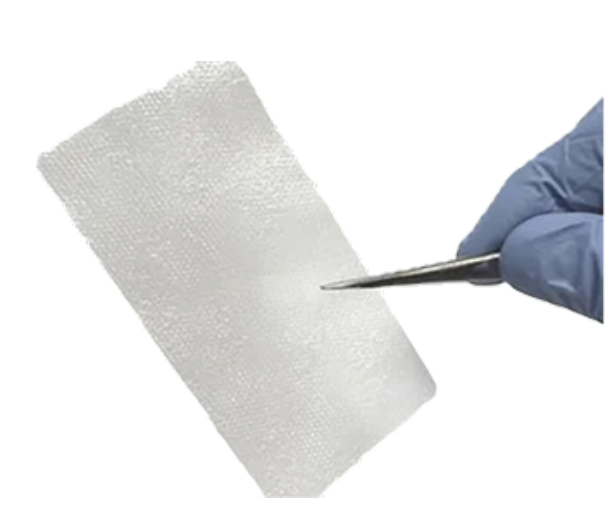Wound healing is a critical aspect of modern medicine, and advancements in biological therapies have transformed the way healthcare professionals approach chronic and complex wounds. One of the most promising innovations in this field is the use of amniotic allografts, which have demonstrated remarkable efficacy in promoting tissue repair, reducing inflammation, and accelerating recovery times. As patients increasingly seek treatments that offer better outcomes with fewer complications, the demand for high-quality skin substitutes for wound healing continues to grow.
Understanding Amniotic Allografts and Their Benefits
Amniotic allografts are derived from the amniotic membrane of the placenta and are known for their rich composition of growth factors, cytokines, and extracellular matrix proteins. These components play a crucial role in modulating inflammation, promoting angiogenesis, and supporting cellular migration, all of which are essential for effective wound healing. Unlike traditional grafts, amniotic allografts provide a biologically active scaffold that encourages natural tissue regeneration rather than simply covering the wound.
One of the significant advantages of amniotic allografts is their versatility. They can be used in a variety of clinical scenarios, from chronic diabetic ulcers and pressure injuries to surgical wounds and burns. Additionally, their anti-inflammatory and antimicrobial properties help reduce the risk of infection, a common complication that can hinder the healing process.
Innovative Products Shaping Advanced Wound Care
The market for advanced wound care products has expanded significantly, driven by a growing understanding of tissue biology and regenerative medicine. Leading skin graft companies have introduced a range of products designed to meet specific clinical needs. Among these, Life Biologics has been at the forefront, offering a diverse portfolio of biologically active grafts, including AmnioAMP-MP, Allopatch Graft, Helicoll Graft, and Membrane Wrap Graft.
- AmnioAMP-MP: This product harnesses the power of processed amniotic tissue to provide a highly effective solution for challenging wounds. Its bioactive properties help accelerate healing while minimizing scar formation.
- Allopatch Graft: A versatile skin substitute, Allopatch Graft is designed for both acute and chronic wound applications, offering a durable and biocompatible scaffold for tissue regeneration.
- Helicoll Graft: Combining collagen with amniotic tissue, Helicoll Graft supports cellular growth and encourages rapid wound closure, making it ideal for surgical and traumatic wounds.
- Membrane Wrap Graft: This graft provides a protective covering that preserves the wound environment, promoting optimal healing conditions and reducing the risk of secondary infections.
Choosing the Right Skin Substitute
Selecting the appropriate skin substitute is critical for achieving successful outcomes. Factors such as wound size, depth, location, and the patient’s overall health influence the choice of graft. Clinicians must consider both the biological properties of the graft and its practical application in a clinical setting. Amniotic allografts stand out because they combine the regenerative capabilities of amniotic tissue with ease of use, making them suitable for a wide range of wounds.
Amniotic Tissue Companies Driving Innovation
The rise of amniotic tissue companies has been fueled by ongoing research in regenerative medicine and tissue engineering. These companies are not only developing new grafts but also improving preservation techniques to ensure product safety and efficacy. Innovations in cryopreservation and sterilization have allowed clinicians to access ready-to-use grafts without compromising biological activity. This ensures that patients receive consistent, high-quality care while minimizing the risk of adverse reactions.
The Future of Advanced Wound Care
Advanced wound care is evolving rapidly, with amniotic allografts at the center of this transformation. The combination of bioactivity, biocompatibility, and versatility makes these grafts a cornerstone of modern regenerative medicine. As clinical evidence continues to accumulate, it is expected that more healthcare providers will adopt amniotic allografts as a standard treatment option for chronic and complex wounds.
Moreover, ongoing research is exploring the integration of amniotic allografts with other regenerative technologies, such as growth factor therapies and stem cell applications. These synergistic approaches have the potential to further accelerate healing, improve functional outcomes, and reduce healthcare costs by minimizing complications and hospital stays.
Conclusion
The field of wound healing has experienced a paradigm shift with the introduction of amniotic allografts and advanced skin substitutes. Products like AmnioAMP-MP, Allopatch Graft, Helicoll Graft, and Membrane Wrap Graft are redefining what is possible in tissue repair, offering patients faster recovery and improved quality of life. By leveraging the regenerative properties of amniotic tissue, clinicians can address complex wounds more effectively than ever before.
As the demand for biologically advanced wound care solutions continues to grow, companies like Life Biologics are leading the charge in providing innovative, safe, and effective options. Their commitment to excellence ensures that patients receive cutting-edge care while clinicians gain access to reliable and versatile grafting solutions. The future of wound healing is brighter, faster, and more effective, thanks to the promise of amniotic allografts.





Comments